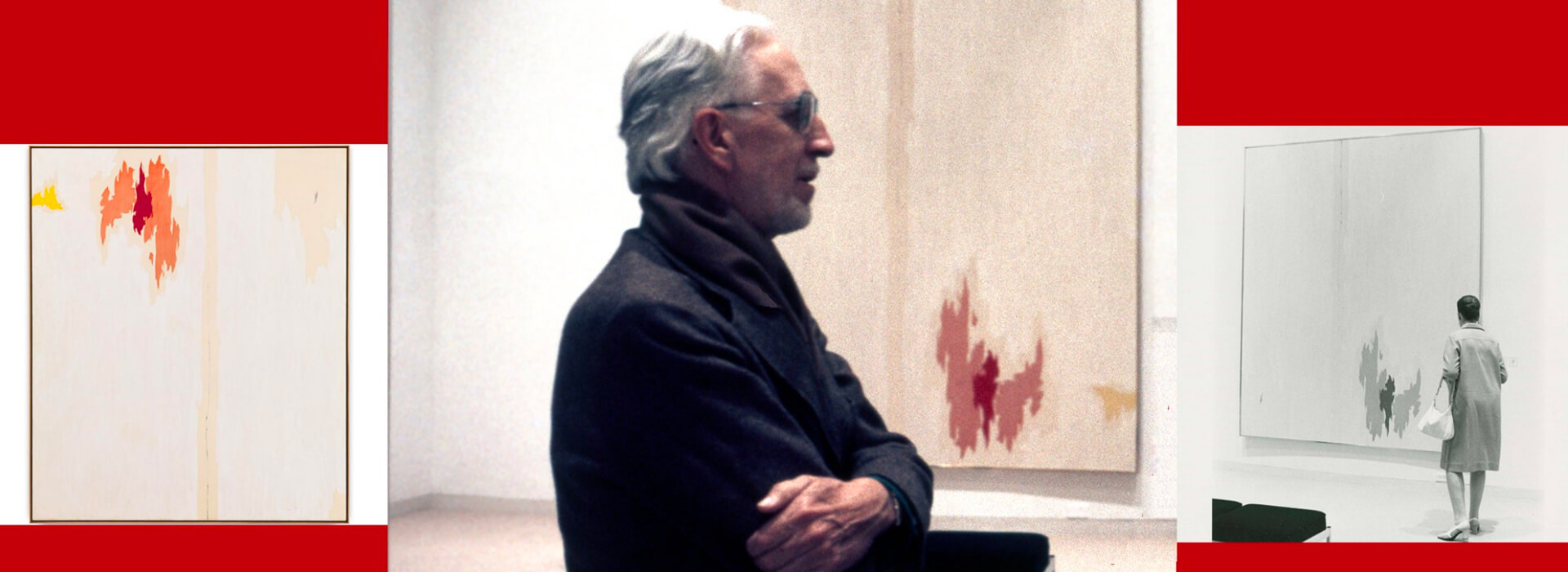Up/Down?
January 23–May 3, 2015
Denver, CO—The Clyfford Still Museum’s fourth year begins with an intriguing four-painting exhibition of the artist who once proclaimed, “I do not intend to oversimplify—in fact, I revel in the extra-complex.” In the midst of masterworks newly installed throughout the Museum’s galleries, Up/Down? presents dilemmas that the world’s most intact public collection of a major American artist may never be able to solve. All of the exhibition’s featured works have yet to be displayed on the Museum’s walls. They include a large painting from Still’s famed 1979 exhibition at the Metropolitan Museum of Art and a rare unsigned, previously undocumented work unrolled by the Museum earlier this year.
Despite Clyfford and Patricia Still’s meticulous cataloguing and photographic documentation of Still’s entire output, there are a few paintings that maintain an air of mystery. Up/Down? explores the issue of orientation in Still’s artwork through the examination of paintings with particularly ambiguous backstories. The exhibition also incorporates key materials from the Clyfford Still Museum Archives that have been invaluable to the Museum’s research on the featured works, illustrating the enigmatic nature of each painting with intimate details.
Up/Down? presents two unsigned paintings and their defiant backgrounds; a recently stretched canvas, PH-896 of 1973, signed by Clyfford Still in opposing corners and opposite orientations; and PH-1134 of 1956, a painting that suggests another work by Still may have been hanging upside down publicly for decades. The unsigned works, PH-244 of 1953 and PHX-27—a painting undocumented prior to this year—have nearly identical forms and composition, and vary only slightly in size. Both resemble PH-847 (1953-No. 2), a well-known painting from outside Denver’s collection that was prominently hung, with the artist’s knowledge, in two different orientations.
Up/Down? is curated by Bailey Harberg Placzek, assistant curator and collections manager.
The small gallery footprint of Up/Down? allows room for the Museum’s first installation since its opening year in which the majority of the galleries are dedicated to Still’s masterworks. Still’s last known painting, PH-1098, dated August 1, 1979, will be exhibited for the first time. Many other featured paintings have not been shown since the Museum’s inaugural exhibitions of 2011 and 2012.
As a painting that was not documented by Patricia and Clyfford Still despite being in their possession, PHX-27 is extremely anomalous. The painting is one of only four known paintings out of 825 in the City and County of Denver’s holdings that were not previously catalogued by the artist and his wife.
Curator’s Tour
Saturday, February 7, 2015, 1 p.m.
Free with Museum admission; no reservations required
Join Assistant Curator and Collections Manager Bailey Harberg for a closer look at Up/Down? and the art historical dilemmas presented by the works on view.
ABOUT THE CLYFFORD STILL MUSEUM
Home to the world’s most intact public collection of a major American artist, the Clyfford Still Museum opened in November of 2011 to promote public and scholarly understanding of the life and work of Clyfford Still (1904–80). Considered one of the most important painters of the twentieth century, Still was among the first generation of Abstract Expressionist artists who developed a new, powerful approach to painting in the years following World War II. In addition to approximately 9,000 square feet of exhibition space devoted solely to the artist’s work, the Museum also houses the Clyfford Still Museum Archives and the Clyfford Still Museum Research Center. The Los Angeles Times calls the Museum “a marvelous model for what a single-artist museum can be;” Smithsonian Magazine describes the Museum as “among the best art museum experiences anywhere.” The Museum was designed by Allied Works Architecture, which received the 2013 Design Award, 2012 Honor Award, and 2012 Craftsmanship Award from the American Institute of Architects for the project.
